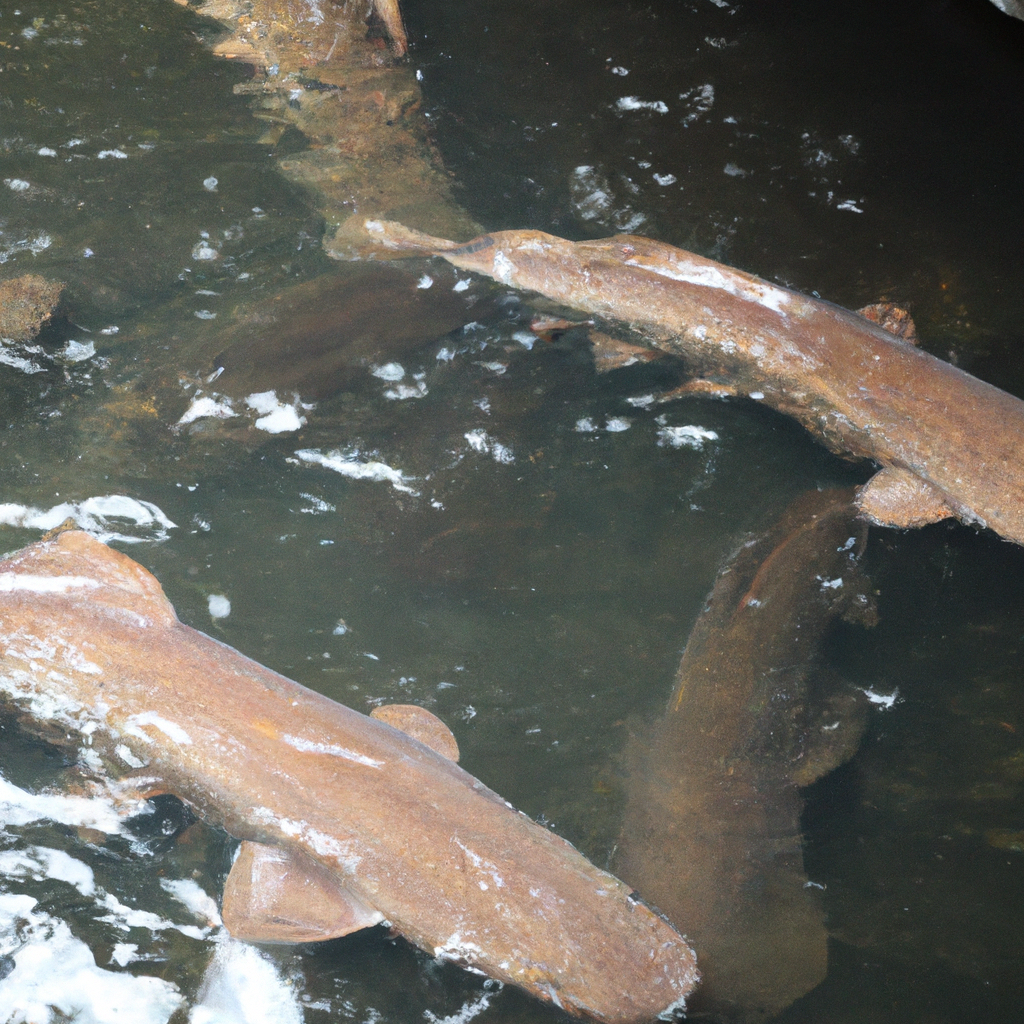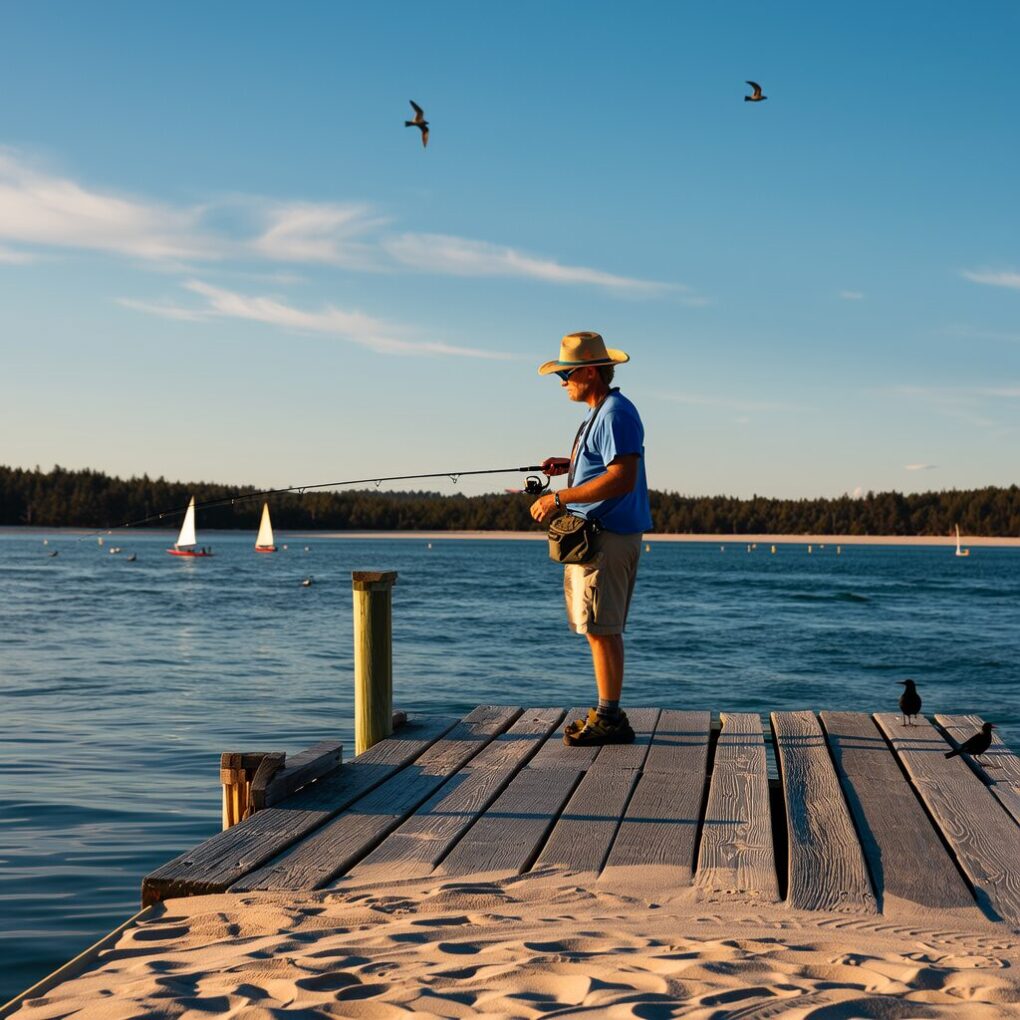metacontent=”Learn about giant river fishes and their fascinating characteristics.” name=”description”/>
Introduction
The world’s rivers, lakes and freshwater ecosystems are home to some of the most majestic creatures. These massive fish species have unique adaptations, such as their size and strength, that allow them to thrive in their aquatic environment. The Amazon River and the Congo River are just two examples of where giant river fish can found around the world. They have captured the imagination of scientists, nature enthusiasts, and anglers alike.
Giant River Fish Characteristics
The size of these fish is one of their most distinguishing features. These aquatic monsters can reach enormous proportions. Some species can reach lengths of 10 feet and weighs several hundred pounds. They are a dominant presence in rivers, dominating the aquatic ecosystems.
Physical Appearance
Despite their enormous size, giant riverfish are surprisingly agile. Many species of giant fish have streamlined bodies which help them glide through the water. This allows them to navigate their habitats in rivers with ease. Their bodies are covered in scales, which protect them from predators and allow them to adapt to their aquatic environments.
Giant river fish have unique behavioral traits which set them apart from the other fish species. Some giant riverfish are solitary creatures who prefer to explore the river depths on their own, while others form groups or schools to hunt prey or navigate through their river habitats. Their behavior is an interesting aspect of their biology and provides insight into the social dynamics of these majestic aquatic animals.
Types of Giant River Fish
The world’s rivers, lakes and freshwater ecosystems are home to many different species of giant fish. Each species has unique adaptations and characteristics that help it thrive within its aquatic environment. From the iconic arapaima in the Amazon River to Southeast Asia’s massive Mekong Catfish, giant river fish are available in many shapes and sizes. Each has its own unique traits that make them a fascinating study.
Arapaima
The arapaima is also known as pirarucu and is one of the biggest freshwater fish species in the world. The arapaima is found in the Amazon River, its tributaries and can reach a length of over 10 feet and weigh up 440 pounds. This massive fish is well-known for its red coloration, strong jaws, and the ability to breathe oxygen, which allows it to survive in oxygen poor waters.
Mekong Catfish
The Mekong Catfish, or giant pangasius as it is also known, is a massive catfish species that lives in Southeast Asia’s Mekong River. This giant fish can reach lengths of up to 9 feet and weights of more than 600 pounds. It is one of the world’s largest freshwater fish. The Mekong catfish, with its whisker-like barbels and impressive size makes it a prized catch among anglers. It is also a symbol of biodiversity in the Mekong river.
Arapaima Mekong Catfish comparison
Both the arapaima catfish and the Mekong river catfish are examples of impressive giant river fish. Each has its own unique characteristics which set it apart from the other fish species. The arapaima, which is known for its size, is also known for its ability to breathe. The Mekong catfish stands out with its massive size and whisker-like barbels. These two species show the diversity of giant riverfish and the importance of conserving the fragile freshwater habitats.
Giant River Fish Adaptations
Their impressive adaptations are one of the main reasons why giant riverfish can thrive in freshwater environments. These unique traits allow them to survive and thrive in fast-moving rivers, murky water, and changing conditions within their aquatic habitats. From powerful jaws and fins to specialized sensory systems, giant riverfish have evolved a variety of adaptations that allows them to dominate their river ecosystems.
Sensory Organs
Giant river fish possess highly developed sensory organs which help them to navigate their aquatic environment and hunt for food. Many species of giant fish have specialized organs that help them detect vibrations, chemical cues, electrical impulses and other signals in the water. This helps them find food, avoid predators and communicate with each other. These sensory adaptations, which are an important part of their biology and allow them to thrive in a complex and dynamic river world, are essential.
Powerful Jaws
The powerful jaws of giant river fish are another adaptation that is essential to capturing and eating prey. Many species of giant fish have large, muscular, sharp-toothed jaws. They can crush shells and tear flesh and swallow large prey in their entirety. Their powerful jaws help them to secure food and assert dominance over their aquatic competitors.
Fins and Tails
Giant river fish have fins and tails which help them to navigate their river habitats quickly and accurately. Many species of giant fish have elongated tails and elongated gills to help them navigate through fast-flowing water. Others have powerful fins which propel them through the waters with ease. These fins and their tails are vital for their survival. They allow them to evade prey, hunt for food, and compete for resources within their aquatic environments.
Giant River Fish: Threats and dangers
Despite their size and strength, the giant river fish are threatened by a variety of threats that threaten their survival. These magnificent aquatic creatures face increasing pressure due to human activities and environmental challenges. To protect giant riverfish and ensure the health and stability of freshwater habitats, conservation efforts are vital.
Habitat Destruction
Habitat destruction is a major threat to giant river fish, which can be caused by activities such as dam building, deforestation and urban development. These activities can disrupt rivers’ natural flow, degrade the water quality, and destroy vital breeding and feeding grounds. As their habitats change and are destroyed, giant fish struggle to find a suitable place to spawn, feed and shelter. This leads to population declines, reduced genetic diversity and a reduction in the genetic diversity.
Overfishing
Overfishing is another major threat to giant fish. This occurs when fish are caught in a rate that exceeds the ability of the fish to reproduce and replenish its population. Many species of giant fish are prized by commercial and recreational fishermen for their meat, their fins, and the size of the fish. Overfishing can cause population declines, genetic bottlenecks and ecosystem imbalances. This threatens the long-term viability for giant river fish populations.
Pollution
Pollution poses a serious threat to giant riverfish, as contaminants like heavy metals and pesticides can harm fish health and disrupt aquatic ecosystems. Pollution can lower oxygen levels in water, impair the immune systems of fish, and increase disease outbreaks in giant river fish populations. To protect the health of giant riverfish and to promote the sustainability of their freshwater environments, it is vital that pollution be addressed.
Conservation of Giant River Fish
To protect the habitats of giant river fish, and to ensure their future, conservation efforts are essential. We can ensure the survival of these majestic aquatic creatures by implementing sustainable fishing techniques, reducing habitat destruction and addressing pollution. Education, research and community engagement are key components of conservation efforts. They help to raise awareness of the importance of giant rivers fish and the value in preserving their unique eco-systems.
Sustainable Fishing Practices
One of the best ways to conserve giant fish is to encourage sustainable fishing practices, which allow fish populations to grow and replenish. We can ensure that giant fish are harvested in an eco-friendly and responsible manner by setting catch limits, creating protected areas and monitoring fish populations. Sustainable fishing practices protect fish populations, maintain ecosystem equilibrium, and support local communities who depend on freshwater resources as a source of food and income.
Habitat Restoration
Habitat restoration is another important aspect of conserving the giant river fish. This involves restoring degraded areas, creating new spawning sites, and improving river health. By restoring natural river flow, removing invasive plants, and planting native vegetation we can create healthy habitats that will allow giant river fish thrive. Habitat restoration is an important part of conservation efforts. It helps protect ecosystems, supports biodiversity, and maintains the ecological balance of rivers.
Education and Outreach
Education and outreach are important tools for conserving giant fish and raising public awareness about the importance freshwater conservation. We can engage with local communities, schools and stakeholders to promote the value and importance of giant river fish. We can also highlight the threats that they face and encourage sustainable practices which protect their habitats. Education and outreach activities help to foster a sense stewardship of freshwater resources. They empower communities to act and inspire future generations.
Conclusion
The giant river fish is one of the most majestic and iconic creatures that inhabits the world’s rivers. These aquatic beasts are known by their size, strength and unique adaptations which help them thrive in watery habitats. Giant river fish are essential to freshwater ecosystems, from the Amazon River to Mekong River. They play a crucial role in maintaining health and balance. Conservation efforts are necessary to protect giant fish and ensure their habitats’ long-term sustainability. These magnificent aquatic creatures deserve our respect, admiration, and protection.




